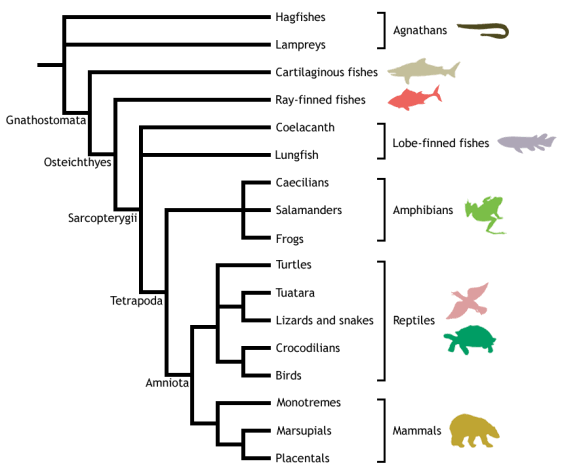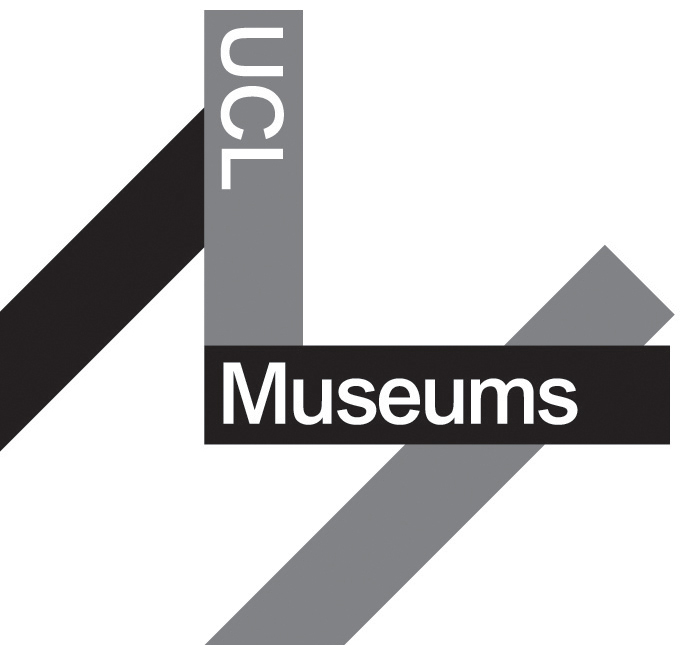Home

Introduction
The following web-book contains a series of information
pages broadly outlining the diversity of living vertebrates, with a few notes
on their fossil relatives. Below is a collage of specimens from UCL's Grant
Museum of Zoology illustrating the wide diversity covered in this web-book -
from jawless vertebrates, sharks, and ray-finned fishes, to amphibians,
reptiles, and mammals.



















Subsequent pages follow a structure that roughly reflects
the evolutionary relationships (or phylogeny) between the higher level
vertebrate groups - for example, the turtles, lizards, tuatara, crocodiles, and
birds are all reptiles and, as such, their pages are clustered together. This
structure need not imply any increase in complexity or morphological
"progress" as one descends through the pages - indeed, every taxon discussed in this web-book is extant, meaning that it has some members
that are still living, and are therefore also evolving under the selection
pressures of their current environment. Rather, the structure reflects the
greater focus of this web-book on those four-limbed vertebrates (tetrapods)
whose ancestors colonised the terrestrial world in the Devonian swamps of
nearly 400 million years ago - in particular the hair-covered, milk-producing
mammals.
While the structure of the web-book may not always act as an
accurate representation of the evolutionary history of vertebrates, the
phylogenetic tree below illustrates how all the major vertebrate clades are thought to be related.

Adapted from Meyer & Zardoya (2003), this is a
conservative estimate of vertebrate phylogeny, reflecting the prevailing
consensus between morphological and molecular data. Conflict between morphology
and molecules is manifest at the unresolved nodes, or polytomies - those nodes
that are formed when greater than two branches coalesce.
For example, the most popular view of morphologists is that
lampreys represent the closest living relatives of the jawed vertebrates
(Gnathostomata), together forming the Vertebrata. This hypothesis excludes
hagfishes from the vertebrates on the basis that they do not possess some of
the derived morphological features shared by lampreys and gnathostomes - in
particular, they lack a vertebral column. Instead, hagfishes are placed as the
sister group to the vertebrates, together forming the Craniata (or craniates) -
animals possessing a skull, or cranium. This view of craniate evolution makes
the living jawless vertebrates, or agnathans, a paraphyletic group. This means
that the jawless vertebrates do not form a natural (or monophyletic) grouping, as their
most recent common ancestor is not unique to them - it is shared with the jawed
vertebrates as well.
In contrast, molecular data tend to group the lampreys and
hagfishes to the exclusion of the gnathostomes, making the living agnathans a monophyletic group termed
Cyclostomi. Under the cyclostome hypothesis, it is presumed that the common
ancestor of the cyclostomes and gnathostomes possessed a vertebral column,
which was subsequently lost in the evolution of the hagfishes.
Despite the disparities between morphological and molecular data evident from the cladogram above, the evolutionary history of the vertebrates is fairly well resolved, with many major traditionally identified groupings persisting through recent advances in methods for phylogenetic inference and the advent of molecular systematics. Consequently, this tree should be used as a working guide while exploring the taxa described within the web-book, providing an evolutionary context that highlights the shared ancestry of the different vertebrate lineages, as well as helping to trace some of the evolutionary innovations that gave rise to the many different forms - including the origin of jaws, ossification of the endochondral skeleton, evolution of terrestrially adapted limbs, and the amniotic egg.
Disclaimer:

Licensed under the Creative Commons Attribution Non-commercial Share Alike 3.0 License
'Vertebrate Diversity' has been released as an open educational resource (OER) on a Creative Commons 'Attribution Non-commercial Share Alike' license. This means that once downloaded, content can be modified and improved to complement a particular course. This requires, however, that improvements are recycled back into the OER community. All content present at the time of download must be accordingly credited and, in turn, novel content must be appropriately licensed. For more information, please refer to the license deed by clicking on the link above.
